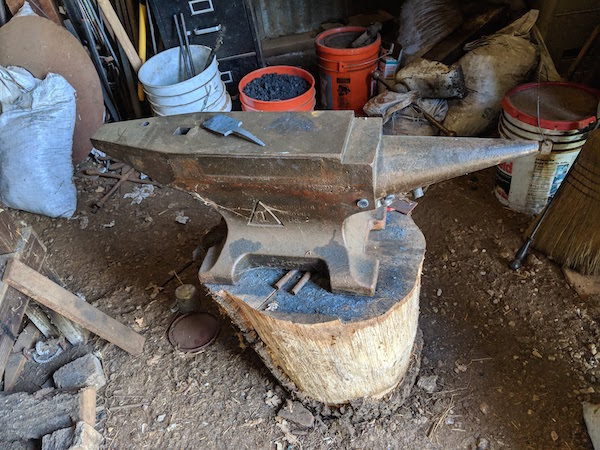
“It’s made of solid iron, it weighs a ton or two, we know you’d like to meet it, it wants to meet you too!” – The Anvil Song, Animaniacs
My friend Brian spends a lot of time in a marvelous, mostly empty old barn. The barn is everything a barn should be – high wooden rafters dribbled in bird droppings, rusted farm tools, the smell of hay and cow manure. Chickens wander in and out, littering the floor with feathers and footprints. When sunlight shines through holes in the barn’s aluminum siding, it illuminates the interior like a punched-tin lantern.
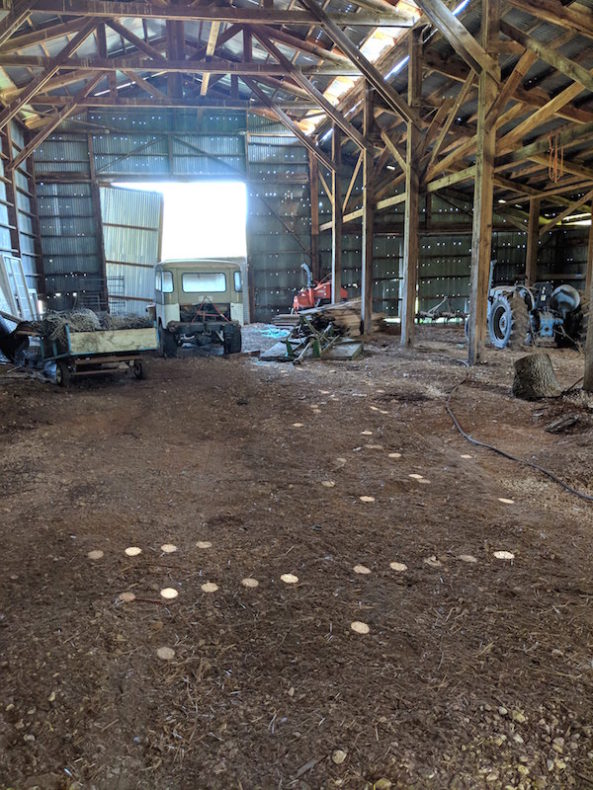
This is where Brian keeps his blacksmithing equipment: a forge, anvil, and many hammers. I asked Brian to show me his shop because I’m interested in metallurgy, the science that brought us ploughs, swords, and the Industrial Revolution. I wanted to understand how we got from melting copper ore in campfires to skyscrapers and smartphones. And obviously, I wanted to hit red-hot metal with a hammer.
Brian is a professional welder, about to finish a degree in welding technology. He can discuss the chemistry and history of metalworking in encyclopedic detail, from the development of sophisticated forging technologies in Africa during the Iron Age to the ultra-sharp Damascus steel swords that inspired Valyrian steel in Game of Thrones.
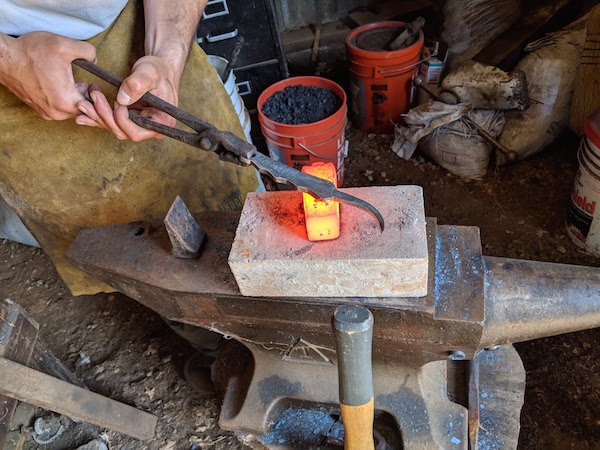
Like baking, metallurgy is all about inducing the right sequence of chemical reactions. To make steel that is hard enough for a sword, but supple enough not to shatter, for example, blacksmiths combine iron with just a tiny dash of carbon. Carbon atoms reinforce iron’s relatively malleable crystals, making the crystals stronger. Add too much carbon, though, and you get cast iron, a porous metal that’s great for soaking up bacon grease, but brittle and easily corroded — not ideal for battle.
Brian fired up his propane furnace, which made a steady, soothing roar. Pale orange flames flicked out of the forge’s mouth — blacksmiths call it dragon’s breath, he said. Although early blacksmiths didn’t understand the chemistry of metallurgy, they transmitted the craft based on look, sound and feel. Brian can judge the temperature of steel within about 100 degrees based on its color, he says. At around 1000 degrees Fahrenheit it turns dull red. At 1300 degrees the metal looks like a glowing raspberry popsicle that you should never put in your mouth. By around 1500 degrees it starts turning orange, and from there on up to yellow, to glowing white.
Brian pulled an orange piece of steel out of the forge and started to beat it into shape. Little by little, he transformed it into a tool shaped like a bird’s beak, which he planned to use to scrape off a waste product of smelting called slag. Next, he held the steel bird over a cherry-red chunk of hot metal to temper it, reheating it at a lower temperature to make it less brittle. The surface steel turned a golden straw color at around 400 degrees, like a perfectly roasted marshmallow. At the target temperature of 600 degrees, it turned an iridescent peacock blue-and-purple.
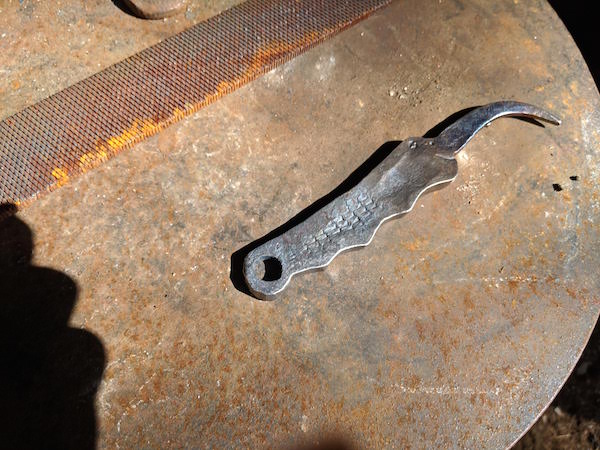
It was my turn. Brian gave me a rod of copper out of which I was to make a marlinspike – a tool sailors use to untangle knots and splice rope. The goal, Brian said, was to flatten the round edges of the rod into an octagon, then hammer it into a sharp, round spike. Every time I brought down the hammer, a chicken clucked. Clang! Cluck. Clang! Cluck. When the copper cooled and became difficult to shape, Brian put it back into the forge for a few minutes then pulled it back out. As I plunged it into a wine barrel full of murky water, the hot metal jerked and squealed.
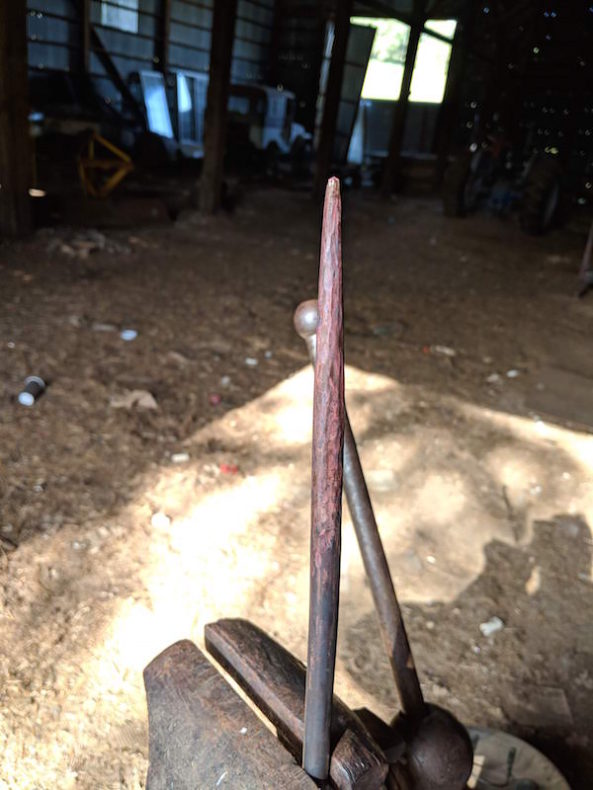
It didn’t take long before I had shooting pains in my forearms and wrists and could barely hold the hammer straight. Bright flecks of copper flew as I rasped at a tiny fold in the metal, a minute flaw that Brian said could doom the tool to corrosion. I imagined forging enough weapons to fend off the White Walkers — now there’s a deadline – and all the nails I’d need to build a house. I understood why blacksmiths were once so important to many cultures that they were considered mystical.
Once upon a time, blacksmiths forged chains that could restrain monsters. They tamed fire and frightened the Devil. They inspired legends, like Hephaestus, the lame Greek god of blacksmithing, or Wayland the smith, a Norse blacksmith whose hamstring tendons were severed by an evil king to force him to stay and forge weapons. Wayland retaliated by making goblets and jewelry from the skulls and teeth of the king’s sons, then flew away on his own, cleverly fashioned wings.
We don’t need metal-working gods anymore, thanks to the invention in the 1850s of industrial steel production and processing techniques like the Bessemer process. Instead of flawed human handiwork, we have a seemingly endless supply of mass-manufactured, interchangeable metal objects and parts. There’s lots to love about living in the age of industrial metallurgy: surgical scalpels made of stainless steel instead of flint or rusty iron; airplanes made from aluminum instead of muslin; buildings that can withstand earthquakes; the fact that when my 1999 Honda Civic breaks down, the autoshop can order a replacement part.
The proliferation of these tools and toys has also made it easy to kill lots of people in seconds, and wreaked environmental havoc. Before visiting Brian’s shop, my strongest association with anvils was Wile E Coyote’s endless quest to drop an anvil on Road Runner. Maybe there’s a lesson to be found in cartoon anvils — a cautionary tale against putting too much stock in shiny objects, or our own cleverness. As Lorelei from Gilmore Girls put it: “Inevitably, the cannon tilted up, shot it out of the air, and it fell down and made an anvil-shaped impression on Wile E Coyote’s head.”